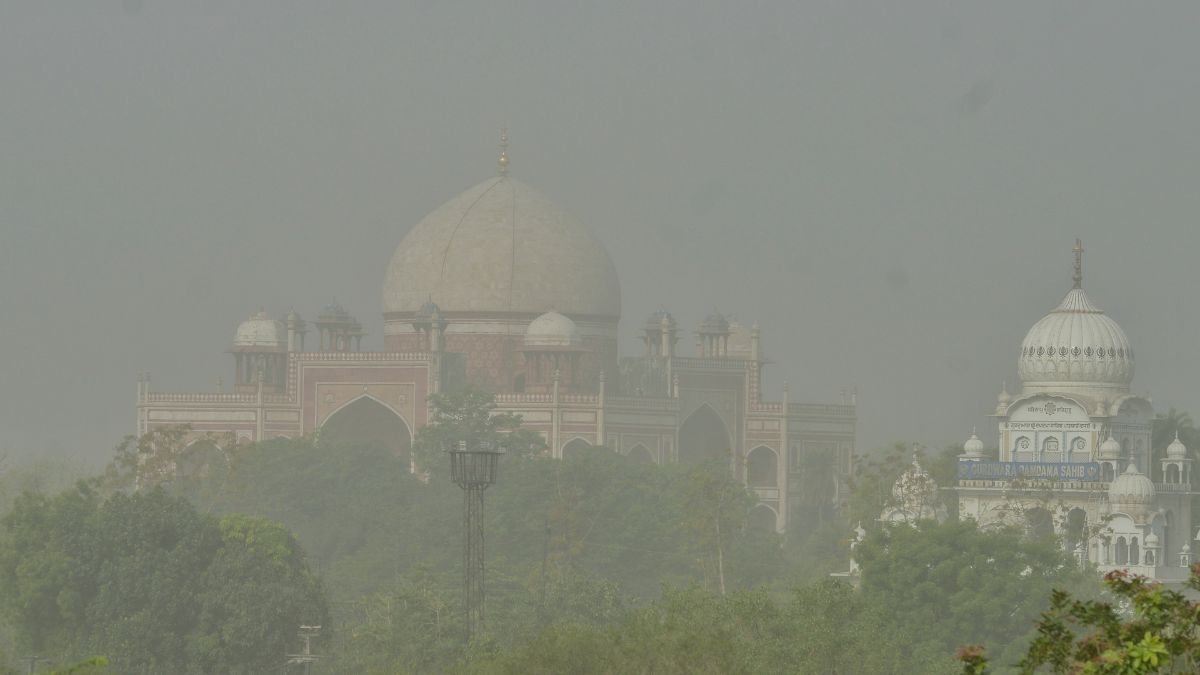Delhi and the National Capital Region (NCR) are used to witnessing polluted air. However, reduced visibility is a surprise in May. Residents of the national capital and NCR have been left perplexed at the sight of thick haze blanketing the sky. When they woke up, a layer of dust had worsened air quality and decreased visibility.
The India Meteorological Department (IMD) on Thursday (May 15) revealed the reason behind this. Here’s what is going on.
Why Delhi-NCR woke up to thick haze
A combination of gusty winds and a rise in overnight dust led to Delhi-NCR being covered in a thick haze on Thursday morning. As per the IMD, an incoming cloud mass moved over the region on Wednesday night, with sudden gusty winds of 30 to 40 kilometres per hour being reported.
This swept fine dust particles into the lower atmosphere, reducing the visibility and air quality.
Visibility at the Indira Gandhi International (IGI) Airport fell from 4,500 metres to 1,200 metres between 10 pm and 11:30 pm on Wednesday, reported PTI.
After the dust storm, winds calmed to 3 to 7 kmph. However, this prevented the scattering of dust particles, affecting the air quality.
As per the IMD, the visibility continues to be poor, ranging between 1,200 and 1,500 metres at both Safdarjung and Palam airports.
A westerly breeze of 10 kmph started dispersing the dust layer at dawn, with visibility returning to 1500 m at Palam, reported Indian Express.
How Pakistan features in Delhi’s air woes
The weather department says that the overnight dust storms in Delhi-NCR can be attributed to dust from North Pakistan.
This dust was further carried by “strong lower-level westerly winds” from Punjab and Haryana to reach Delhi and NCR on Wednesday night.
It worsened Delhi’s air quality, with the Air Quality Index (AQI) dropping to the ‘poor’ category.
Impact Shorts
More ShortsAs per Indian Express, the Indian Institute of Tropical Meteorology said that at 8 am, Delhi recorded an AQI of 236 or in the ‘poor’ category. It also predicted that for the next two days, “The air quality is likely to be in the Moderate to Poor category”.
The calm winds continued to plunge the city’s air quality, which reached 249 in the ‘poor’ category at 10 am today.
The air quality in the city had remained ‘moderate’ for the past few weeks. On Wednesday, the AQI was at 135 or in the ‘moderate’ category in Delhi.
The dust eventually shifted towards the east, improving the visibility. Palam has reported a visibility of 4000 m, according to IMD.
Political slugfest over Delhi’s air pollution
Delhi’s poor air quality sparked a war of words between the ruling Bharatiya Janata Party (BJP) and the opposition Aam Aadmi Party (AAP).
Former Delhi Chief Ministers Arvind Kejriwal and Atishi raised the issue on social media. The AAP supremo said the air pollution situation was “never this bad” during this time of the year when his party was in power in the national capital.
Echoing his views, Atishi said that Delhi’s AQI has never been so high in May. Citing Central Pollution Control Board (CPCB) data from 2022-2024, she said that AQI on May 15 never went beyond 243.
“Today, the AQI is 500," Atishi claimed, questioning whether Delhi Environment Minister Manjinder Singh Sirsa would take responsibility for the city’s air pollution.
Sirsa retorted, saying it was “unfortunate” that a former CM was using a natural phenomenon to score political brownie points. The “real blame” lies on the AAP, which “neglected” pressing issues during its 10-year rule in Delhi, the BJP leader said.
“Today’s spike in AQI was due to a weather event, not misgovernance. But let’s talk about real misgovernance Atishi ji… For 10 years, AAP allowed Delhi to drown in mountains of untreated legacy waste, broken and dust-choked roads with ZERO accountability on pollution!” the BJP minister alleged on X.
With inputs from agencies
)